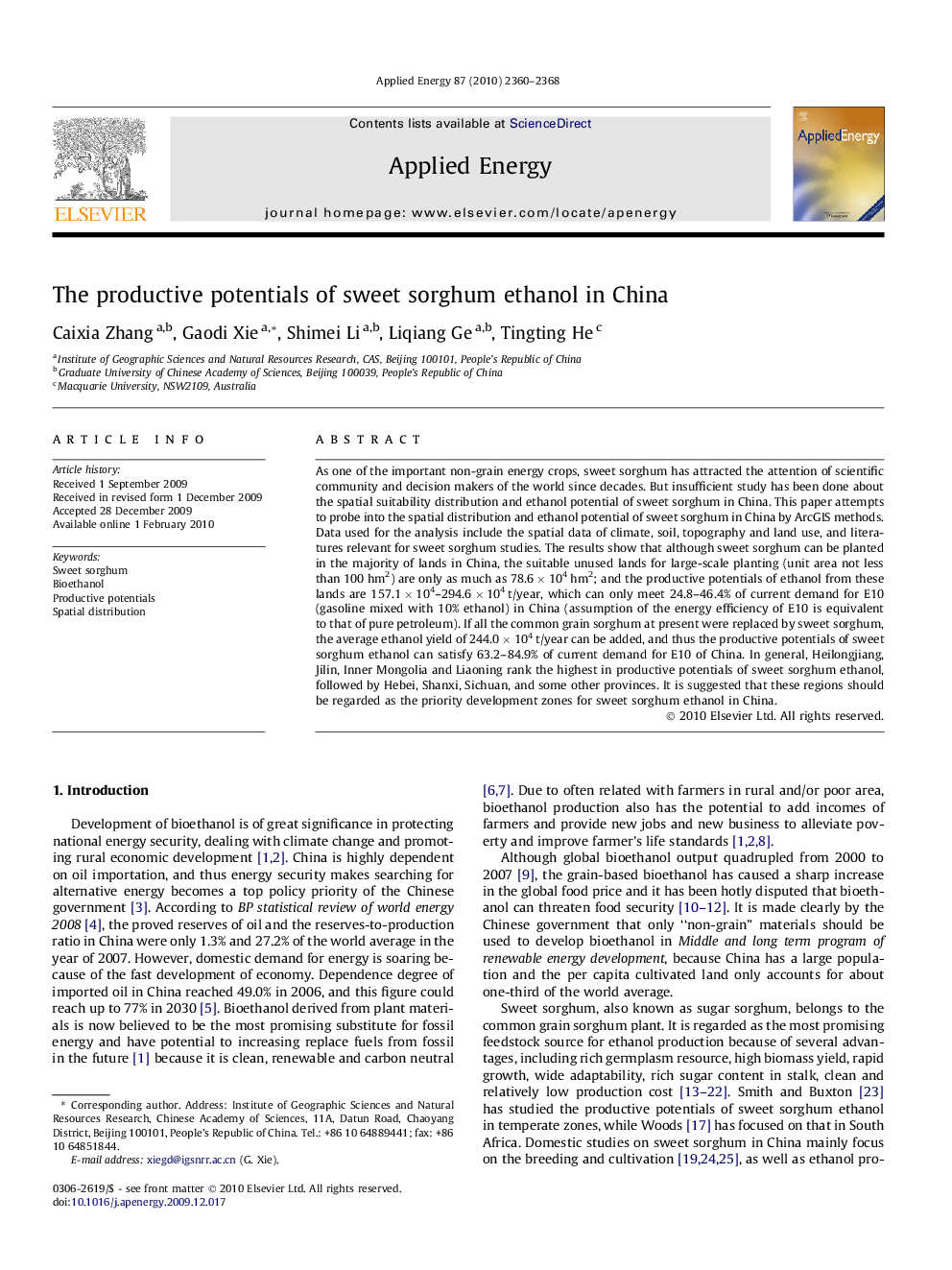| Article ID | Journal | Published Year | Pages | File Type |
|---|---|---|---|---|
| 244808 | Applied Energy | 2010 | 9 Pages |
As one of the important non-grain energy crops, sweet sorghum has attracted the attention of scientific community and decision makers of the world since decades. But insufficient study has been done about the spatial suitability distribution and ethanol potential of sweet sorghum in China. This paper attempts to probe into the spatial distribution and ethanol potential of sweet sorghum in China by ArcGIS methods. Data used for the analysis include the spatial data of climate, soil, topography and land use, and literatures relevant for sweet sorghum studies. The results show that although sweet sorghum can be planted in the majority of lands in China, the suitable unused lands for large-scale planting (unit area not less than 100 hm2) are only as much as 78.6 × 104 hm2; and the productive potentials of ethanol from these lands are 157.1 × 104–294.6 × 104 t/year, which can only meet 24.8–46.4% of current demand for E10 (gasoline mixed with 10% ethanol) in China (assumption of the energy efficiency of E10 is equivalent to that of pure petroleum). If all the common grain sorghum at present were replaced by sweet sorghum, the average ethanol yield of 244.0 × 104 t/year can be added, and thus the productive potentials of sweet sorghum ethanol can satisfy 63.2–84.9% of current demand for E10 of China. In general, Heilongjiang, Jilin, Inner Mongolia and Liaoning rank the highest in productive potentials of sweet sorghum ethanol, followed by Hebei, Shanxi, Sichuan, and some other provinces. It is suggested that these regions should be regarded as the priority development zones for sweet sorghum ethanol in China.
